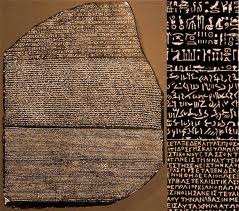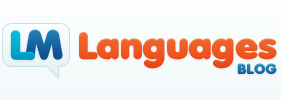Unravelling the Secrets of a Society
Posted on July 24th, 2013by Melanie
In Demotic, Hieroglyphics, Historic | Leave a Comment »
 Spoken by those who constructed the magnificent pyramids, the craftsmen who carved and decorated the tombs in the Valley of the Kings, and the creators of the monumental temples we can still see in Egypt today, Ancient Egyptian is one of the oldest spoken languages which survives today in Coptic, the language spoken by Christian Egyptians.
Spoken by those who constructed the magnificent pyramids, the craftsmen who carved and decorated the tombs in the Valley of the Kings, and the creators of the monumental temples we can still see in Egypt today, Ancient Egyptian is one of the oldest spoken languages which survives today in Coptic, the language spoken by Christian Egyptians.
This ancient language was beautifully written using hieroglyphs which are pictures of animals, people and objects. There are over 700 hieroglyphs (meaning ‘sacred carving’) and they all represent consonants, there are no vowels! They can be written across the page or from top to bottom and the secret to reading them is to follow the direction that the animals, people or objects are facing.
But how did we come to understand the meaning of hieroglyphic writing? It was thanks to the discovery of a special rock in the town of Rosetta, Egypt, by a soldier in 1799. This black basalt slab, now known as the Rosetta Stone, had the same piece of writing carved in it three times in different languages: hieroglyphics, demotic and Greek. A determined French Egyptologist, Jean Francois Champollion, finally translated it in 1822 by discovering that the hieroglyphs spelling ‘Ptolemy’ (Ptolemy V was a ruler of Egypt) were enclosed in a cartouche which he then compared with the Greek writing on the Rosetta Stone, and was eventually able to translate the rest of the writing. This amazing translation has given us the ability to read an ancient language and subsequently understand how an ancient civilisation lived.
Do you have an interest in ancient languages? Or perhaps you´re curious about the history of our more modern day languages? As with the French Egyptologist who had knowledge of the Greek language, you too could open up new opportunities and possibilities by speaking another language. If the modern era of communication is higher on your agenda, then why not improve your linguistic capabilities by learning a new language today!

